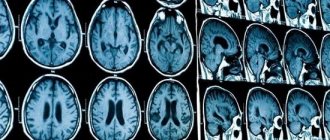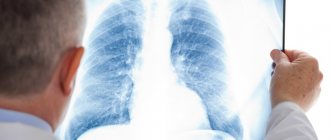Pain in the back of the head is a fairly common problem. And she has many reasons. Therefore, it is important to find their problems in order to feel relief. Let's find out together with a specialist how to do this.
Headaches in the back of the head can have several different causes. For example, it may only be muscle damage due to a minor injury, or it may be a secondary symptom of other pathologies. The type and location of pain can play a critical role in diagnosing the cause. If the pain is severe and repeated, be sure to consult a doctor.
Causes of pain in the back of the head in an adult
“Pain in the back of the head itself does not indicate the cause of this pain,” explains neurologist Elena Gaivoronskaya.
– The doctor assesses the frequency of pain, its intensity, duration, nature (pulsating, pressing, stabbing), associated symptoms. Only on the basis of all this data can a diagnosis be made. There are a number of reasons why headaches may occur predominantly in the back of the head.
headaches .
This is the most common cause of pain in the back of the head. Such pain can last from 30 minutes to 7 days. Such pain can be caused by severe stress, overwork, lack of sleep, malnutrition, poor posture or not drinking enough water.
Patients with this problem usually feel tension in the back or front of the head. The pain can range from dull to severe.
Migraine.
Another common type of headache that often appears in childhood and gets worse with age. Migraines are most common in women. Its symptoms include severe pain on one side of the head with nausea, vomiting and blurred vision. Patients are usually sensitive to light, noise, or smell. Physical activity may increase pain. It can last from several hours to several days.
Causes of migraines include emotional or physical stress, environmental and dietary changes. Sometimes medications (such as birth control pills) can also cause migraines.
Overuse of medications or recurring headaches.
These headaches can develop if a person takes too many painkillers. They are very strong and are often accompanied by nausea, anxiety, irritability, fatigue, difficulty concentrating, memory loss and even depression.
Occipital neuralgia.
A rare but severe headache that usually begins at the base of the neck and spreads to the back of the head and then behind the ears. Often occurs when the occipital nerves, which run up the back of the neck to the base of the skull, are damaged or irritated. The pain is accompanied by a burning or shooting sensation and persists on one side of the head, but often intensifies with movement of the neck. The patient is usually sensitive to light.
Possible causes include spinal injury, tumors, nerve damage caused by diabetes, swollen blood vessels, and rarely infection.
Headaches during physical activity.
They occur as a result of stressful activities and often occur after physical exercise. This pain resembles palpitations and can last from 5 minutes to 2 days.
Often occurs after heavy weight exercise or running. But sometimes they happen after sexual intercourse or pushing in the toilet.
Headache due to arthritis.
It appears in the back of the head and intensifies with movement. May be the result of arthritis of the first, second or third vertebra. Either it is associated with changes in the bone structure of the neck or inflammation of the blood vessels in the head.
In addition, the cause of a headache in the back of the head can be:
- osteochondrosis of the cervical spine;
- high blood pressure;
- increased intracranial pressure;
- stress;
- brain tumors;
- brain aneurysm;
- subarachnoid cerebral hemorrhage;
- cervical spine injuries and traumatic brain injuries;
- meningitis.
Diagnostics
At the first visit, the doctor interviews the prospective patient about the nature of the discomfort, the frequency of occurrence of the symptom, and other clinical manifestations that occur in combination with numbness. They also collect information about cases of paresthesia in the past, the nature of professional activity, and lifestyle. The hereditary factor (cases of neurological and vascular diseases in close relatives) is of no small importance. Find out whether there have been previous surgical interventions that could lead to paresthesia.
Next, the level of sensitivity of the skin is examined in areas that are affected by paresthesia, as well as in adjacent areas. When examining the epidermis, the doctor pays attention to the shade of the skin, the volume of hair on the head near the face (are there areas with hair loss), local temperature (as the inflammatory process develops, it increases).
Symptoms of paresthesia:
- tingling or burning sensation on the skin;
- "goosebumps" on the face;
- blanching of the epidermis in the area with paresthesia;
- numbness.
Paresthesia occurs suddenly, without precursor symptoms, or gradually, supplemented by other clinical manifestations. As a rule, sensory disturbances are short-lived and occur in “flares.” Rarely is the symptom continuous, which is possible with the development of severe multiple sclerosis.
To determine the cause of paresthesia, that is, a neurological or vascular disease, instrumental and laboratory diagnostics are prescribed:
- blood tests for sugar levels;
- blood tests for levels of toxic substances;
- biochemical blood test;
- ultrasound diagnostics of vessels of the neck and head;
- X-ray examination of the spinal column in the cervical region;
- computer and magnetic resonance imaging of the spinal cord and brain.
One of the common methods for diagnosing the primary pathological process is electroneuromyography. The study makes it possible to estimate the rate of transmission of excitation factors along nerve fibers and, as a result, to identify a violation of this process.
If there is a suspicion that paresthesia is caused by filling material entering the dental canal, diagnostic measures are carried out by a dentist.
Modern methods of treatment
Treatment methods depend on the diagnosis.
Tension headaches.
They are usually treated with painkillers, massage and sometimes meditation. However, frequent tension headaches require medical supervision.
Migraine.
Treatment for this disease includes painkillers and rest in a darkened room. Doctors often recommend lifestyle changes, hormone therapy, and anti-migraine medications such as triptans to reduce the frequency and intensity of migraines.
Returning pain.
The best treatment for this type of pain is to stop taking painkillers. Yes, at first the headaches get worse, but they go away quickly.
In severe cases, you should consult a doctor - physical or behavioral therapy may be required to break the habit of using analgesics.
Occipital neuralgia.
It can be treated with heat compresses, rest, massage, physical therapy or painkillers. Severe pain may require oral muscle relaxants, nerve blocks, steroid injections, or local anesthesia. In rare cases, surgery is necessary to relieve pressure on the nerves or block pain impulses to that part of the body.
Pain during physical activity.
Taking painkillers before exercise can solve this problem. In addition, it is important to avoid stress, eat right and get enough sleep.
Types of Numbness
Depending on the disease that provoked the syndrome, numbness can affect different parts of the body:
- If the cause is a pathology of the brain, the loss of sensitivity will affect the limbs on the opposite side. So, if the right hemisphere is damaged, the left leg or arm will suffer.
- With diseases of the spinal cord, numbness occurs in the area located below.
- Polyneuropathy provokes the “gloves and socks” syndrome.
- If the culprit is a peripheral nerve, the person will feel a loss of sensitivity in a finger - for example, the little toe on the foot, or the big toe - in the area of innervation.
Popular questions and answers
We asked neurologists to answer questions related to headaches in the back of the head.
When can a headache in the back of your head be dangerous?
“Such symptoms,” says neurologist Olga Zincheva, “can include:
- concomitant increase in body temperature;
- weakness, awkwardness;
- numbness and tingling in the limbs or one limb;
- prolonged increase in pressure, difficult to reduce;
- severe headaches;
- headaches are accompanied by nausea and vomiting;
- double vision, impaired consciousness.
When to see a doctor for a headache in the back of the head?
“There are signs,” explains Olga Zincheva, “that require medical attention:
- you have a headache for the first time for no apparent reason;
- pain lasts several days;
- there are concomitant diseases.
“You need to go to the hospital immediately,” adds colleague Elena Gaivoronskaya, “if the headache occurs suddenly, it is very intense, there was no such pain before, or if the pain is accompanied by weakness in the limbs on one side of the body, a distortion of the face, speech disorder, or lack of coordination. If you have other alarming symptoms, you should consult a doctor as planned. You should also see a neurologist if you are taking too many pain medications or if your headaches are affecting your quality of life.
Numbness of the face
Stroke
Diabetes
34997 March 16
IMPORTANT!
The information in this section cannot be used for self-diagnosis and self-treatment.
In case of pain or other exacerbation of the disease, diagnostic tests should be prescribed only by the attending physician. To make a diagnosis and properly prescribe treatment, you should contact your doctor. Numbness of the face: causes of occurrence, what diseases it occurs with, diagnosis and treatment methods.
Definition
Numbness of the face occurs when the sensitivity of skin and muscle receptors to various impulses is impaired. This symptom may develop gradually or appear suddenly. Loss of facial sensitivity is described as burning, tingling, sometimes pain, and in some cases as a complete absence of sensation. When the face is numb, the color of the skin over the affected area may change in the form of pallor or redness.
In severe cases, sensory impairment is accompanied by a decrease in the motor function of the facial muscles.
Types of facial numbness
Any external influence, be it heat or cold, light touch or strong pressure, leads to activation of skin receptors and muscle structures. Each receptor is associated with a specific type of nerve fiber that transmits a specific type of sensitivity (sensation of pressure on the skin, vibration, stretching of the skin, and temperature sensitivity). An impulse is generated in the receptor, which is sent through nerve fibers at high speed to the nerve ganglia, which are a collection of sensory neurons. This is where primary information processing occurs to activate vital reflexes. Subsequently, the impulse goes to the brain, where it is processed in special nerve centers, and the person feels pain, pressure, vibration, etc. Thus, we can talk about the following types of sensitivity disorders:
- Violation of surface sensitivity
occurs when receptors (temperature, tactile, pain, etc.) and nerve fibers of the facial skin are damaged. - Violation of deep sensitivity
occurs when the receptors and nerve fibers of the facial muscles are damaged. - Violation of complex types of sensitivity
. A similar type of disorder occurs when the cerebral cortex is damaged. There is no recognition of two different stimuli that simultaneously affect the skin, or the person cannot determine the location of the touch.
Possible causes of facial numbness
In many cases, numbness in different parts of the face is short-term, passing within a few minutes.
Such episodes can occur when the head is positioned in an awkward position, for example during sleep.
This occurs due to compression of the nerve fibers and a temporary disruption of impulse conduction. There is a burning and tingling sensation in the affected area. Partial loss of sensitivity is observed with prolonged exposure to the cold due to vasospasm. After gradual warming of the skin, sensitivity is restored.
However, facial numbness can be a symptom of a serious medical condition.
Acute cerebrovascular accident, or stroke
– a common cause of sudden numbness of the face in combination with a violation of facial activity. Hemorrhage or blockage of brain vessels by a thrombus (blood clot) occurs, acute oxygen deficiency and damage to neurons with disruption of their functions develops. Symptoms develop unexpectedly, sometimes accompanied by headache.
The main signs of a stroke are: numbness of the face and limbs on one or both sides, sudden weakness, speech impairment (inability to clearly pronounce words), drooping of the corner / corners of the mouth, uncoordination of movements.
If these symptoms appear, you should immediately seek medical help. A cerebral aneurysm
can cause numbness in the face due to compression of nerve fibers and sensitive centers of the brain. It usually develops gradually; at the onset of the disease, symptoms may be completely absent. Numbness first affects one area of the face (for example, perioral), and with further growth of the aneurysm, the affected area gradually expands. Sensations may also change: from tingling, burning at first - to a complete absence of sensations later.
There is a danger of rupture of a cerebral aneurysm; in this case, the symptoms are similar to those of a stroke and appear quickly.
Trigeminal neuritis
often accompanies inflammatory diseases of the oral cavity (caries, periodontitis), ear (otitis), paranasal sinuses (sinusitis, frontal sinusitis, ethmoiditis), parotid glands (mumps). The branches of the trigeminal nerve are irritated, which can lead to numbness in the corresponding areas of the face.
Impaired sensitivity with increased tone of the masticatory muscles
occurs due to compression of the branches of the trigeminal nerve by muscle fibers. Hypertonicity of the masticatory muscles is characteristic of damage to the temporomandibular joint due to arthritis and arthrosis, incorrectly selected braces, and certain diseases of the pharynx, for example, peritonsillar abscess.
Diabetes
– with this disease, the process of utilization of glucose from the blood is disrupted, which leads to damage to the vascular wall and disruption of the nutrition of nerve bundles. In the absence of maintenance therapy, tingling and partial loss of sensitivity in areas where the blood supply is impaired may occur.
Numbness of the face in multiple sclerosis
occurs due to demyelination (disappearance of the outer sheath) of the nerve fibers of the trigeminal nerve. Numbness is often preceded by severe pain not only in the face, but also in the limbs.
Tumors of the brain and its membranes
lead to impaired sensitivity in the facial area due to compression of the neurovascular bundles or tumor growth in them.
Which doctors should I contact if I have facial numbness?
If your face becomes numb, you should consult a neurologist or therapist. In some cases, consultation with an otolaryngologist, endocrinologist, or dentist may be required.
Diagnosis and examinations for facial numbness
Depending on the suspected cause of facial numbness, the following laboratory and instrumental studies may be required:
- clinical blood test;
Treatment of sensitivity disorders
Therapy depends on the disease that caused the pathology. For example, if the diagnosis reveals osteochondrosis, at the Professor Gorbakov Clinic in Krasnogorsk they prescribe:
- medications - anti-inflammatory drugs, decongestants and angioprotectors;
- manual therapy, massage and other local treatments;
- physiotherapy – “magnets”, UVT, laser;
- exercise therapy;
- acupuncture, vacuum therapy.
If a disorder of skin sensitivity occurs due to a hernia or protrusion, chondroprotectors are prescribed to strengthen the tissues of the intervertebral discs.
The choice of physiotherapeutic methods in the clinic is also carried out depending on the underlying cause. For example, for diabetes mellitus, electrophoresis of nicotinic acid and zinc in the iliac region is indicated, and for multiple sclerosis, magnetic laser irradiation, cryotherapy and massage are indicated. Very often, doctors recommend treating skin sensitivity disorders by supplementing the diet with vitamin B12 and folic acid, the deficiency of which causes the syndrome.










